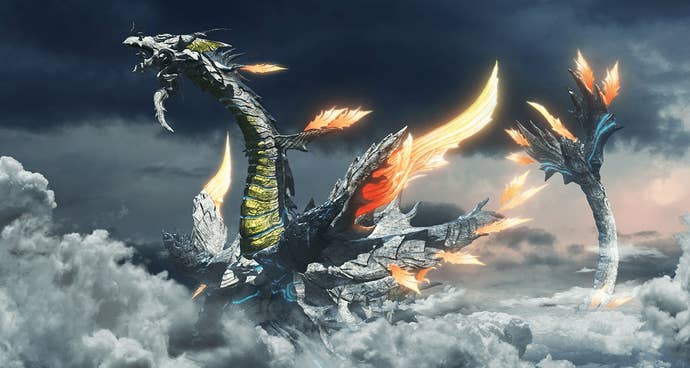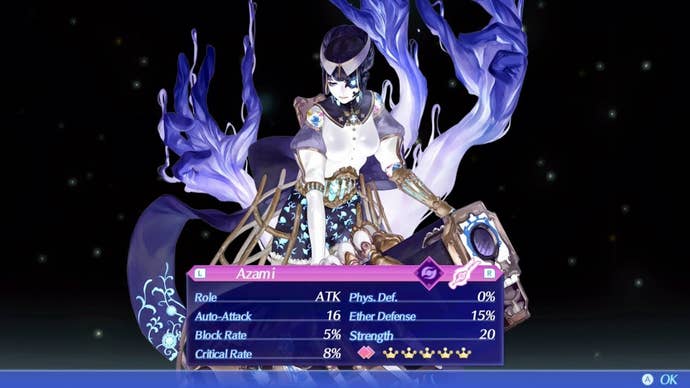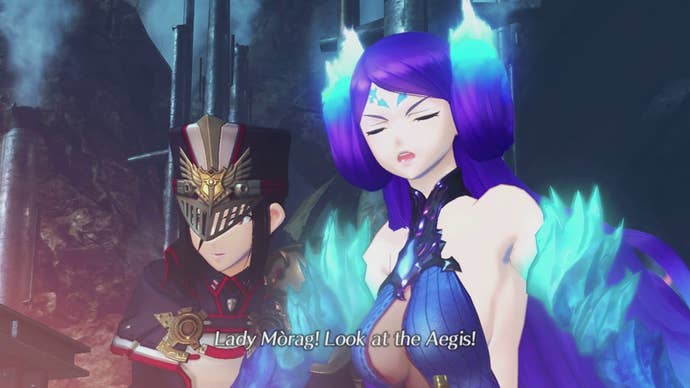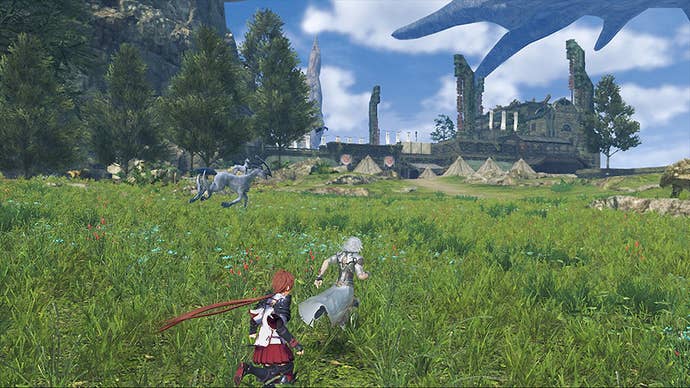Xenoblade Chronicles 2 Postmortem: Breaking Down the Inaugural Switch RPG's Success With Tetsuya Takahashi
What Monolith Soft learned from Xenoblade Chronicles 2's sometimes-difficult development, and how it applied that knowledge to the Torna: The Golden Country DLC.
This article first appeared on USgamer, a partner publication of VG247. Some content, such as this article, has been migrated to VG247 for posterity after USgamer's closure - but it has not been edited or further vetted by the VG247 team.
Xenoblade Chronicles 2 for the Nintendo Switch is a sometimes-inaccessible game dotted with inconsistent character designs and visual glitches. It was also one of my top picks for 2017. I poured close to 200 hours into Rex and Pyra's journey through the misty world of Alrest. I've been playing JRPGs since the early '90s, and I can't name too many that are more imaginative and fascinating than Xenoblade Chronicles 2.
Like its predecessor, Xenoblade Chronicles 2 follows a company of young heroes who live, work, and fight on the backs of enormous creatures that form the continents of their strange world. Even in the oft-bizarre JRPG genre, there's nothing like the Xenoblade Chronicles games. Its huge, sometimes animalistic land masses make for unforgettable settings, especially when those fantastical visuals are paired with the games' stunning soundtracks. Xenoblade Chronicles 2's battle system, which mixes auto-attacks and timed button presses with menu-based options, is also an oddity. It's not for everyone, but to appropriate the slogan for Alexander Keith's IPA, "Those who like it, like it a lot."

Though I was initially worried that Xenoblade Chronicles 2 might get lost in the Holiday 2017 hullabaloo, the lovably strange adventure shone through in the end. Not only is it one of the best-selling games on the Switch, but it also performed unexpectedly well in North America and Europe.
"From a sales perspective, I have to say Xenoblade Chronicles 2 exceeded my expectations," Monolith Soft executive director Tetsuya Takahashi tells me through a translator during a recent phone interview. "We really saw more people pick the game up and experience it in the North American and European territories than we thought would do so."
Blades of Every Shape and Size
Outside of Xenoblade Chronicles 2's sales performance, we talked about Monolith Soft's free-to-play-inspired approach to design, what it was like developing such a big (and sometimes opaque) RPG for Nintendo's new hardware—not to mention what it was like corralling dozens of different artists to put together Xenoblade Chronicles 2's somewhat-infamous Blade roster.

"Jarring" is one word critics use to describe the designs of its Blades, the sentient weapons each member of the main cast pairs up with to attack foes. Monolith Soft commissioned many popular manga artists and Japanese character designers to construct dozens of unique Blades (and a few of those designs courted controversy). The main point of including so many styles, Takahashi says, was to give Xenoblade Chronicles 2 a "festive" atmosphere by offering so much visual variety.
Xenoblade Chronicles 2's cornucopia of differing styles came with an unexpected benefit: Monolith Soft's 3D artists received valuable modelling skills. "Our staff needed to take art from all these different styles and sources and give them 3D models to use in-game. I think that work really helped our staff grow their skillset," Takahashi says.
When Free-to-Play Mechanics Really Are Free
With Blades and 3D models on top of my mind, I ask Takahashi which character proved most popular. The answer is Xenoblade Chronicles 2's fiery heroine, Pyra. At least, that's the case in Japan. Takahashi wondered aloud who the most popular character is in Europe and North America, and I told him Pyra is still a good guess (I stan for Lady Morag, but I suppose that's neither here nor there).

The "Gashapon" method of earning Blades in Xenoblade Chronicles 2 stands as one more oddity about the game. Whenever Rex and his pals acquire a Core Crystal, they need to touch it at a time of the player's choosing to "hatch" a random new Blade. There are dozens of Blades, and several are marked "Rare" or "Legendary." Xenoblade Chronicles 2's Blade-birthing system is exactly what you'd expect to find in a free-to-play mobile game—except there's no premium currency to buy, nor is there any way to improve your chances of landing a rare Blade beyond sheer luck. Xenoblade Chronicles 2 has no in-app purchases, period, beyond its DLC. Why, then, implement a Gashapon mechanic of any kind?
Monolith Soft assumed getting a different outcome every time a Core Crystal is awakened would encourage people to share their new acquisitions on social media. This assumption was correct, as it turns out: Shortly after the game's release, the Switch's easy snap-and-share function caused Twitter to light up with screenshots of Blades ranging from cool to bizarre. "We hit on this idea of a Gashapon mechanic that would give different players different outcomes, and that might be something that would encourage them to share their experiences on social media," Takahashi tells me.
The Golden Country's Gift of (Programming) Knowledge
Mechanically, Xenoblade Chronicles 2 had some rough edges at launch. Some of the visual and audio quirks were sanded down via patches as the studio became more comfortable with the Switch. Then Xenoblade Chronicles 2 received DLC in September with Torna: The Golden Country, a sizable standalone adventure that serves as a prologue to the main game. The Golden Country's visuals and mechanics are noticeably refined; the DLC isn't weighed down by the problems that accompanied Xenoblade Chronicles 2 out of the gate.

Having noticed how the characters' battle menus are streamlined in the Torna DLC, I ask if the change was in direct response to some of the complaints people had about Xenoblade Chronicles 2's potentially confusing menus. "We wanted the battles in the Torna DLC to be speedy, but we did hear comments from the community about how some elements [to the Xenoblade Chronicles 2] battle system were a bit tricky to understand," Takahashi admits. "We wanted to make it easier to approach and more streamlined.
"We were also thinking about how the DLC is standalone content. We wanted the battle system to be approachable for players who haven't experienced the main game yet."
Xenoblade Chronicles 2 offered lessons for Monolith Soft beyond UI improvements, though. Getting the game's engine to play nice with the Switch was challenging at first (some players complained about frame rates chugging when the game was in handheld mode—even though said frame drops weren't a problem during TV play, weirdly). But myriad patches to Xenoblade Chronicles 2 and the comparatively smooth Torna DLC demonstrate the team finally got a handle on things.

"RPGs are process-intensive because they often involve lots of different elements being displayed on-screen at once," Takahashi says. "There are a lot of things we learned [about developing the engine for Xenoblade Chronicles 2] that we put towards making optimizations in the [Torna] DLC. We think the DLC is a fairly optimized experience; we really focused on making sure players hopefully don't see frame rate drops."
X Marks the Spot: Xenoblade Chronicles X on the Switch?
As the sun set on our conversation, I ask Takahashi a question that's admittedly predictable, but burns my soul nevertheless: "Is there a chance we'll see a port of the Wii U's Xenoblade Chronicles X on the Switch?" Like many excellent games on the failed console, Xenoblade Chronicles X faded into relative obscurity and is deserving of new life on the Switch.

"Well, the future at present is unclear," Takahashi says, which is the same answer I received when I ask about the possibility of a Xenoblade Chronicles 3. "Personally speaking, I'd love to play the game on the Switch, but it would be really difficult to make it."
When it comes to roadblocks that stand in the way of Xenoblade Chronicles X on the Switch, Takahashi's answer is simple.
"Money," he laughs. "It's a massive game. Re-creating it would be really difficult."
With so many Wii U ports popping up on the Switch, it's easy to forget developers can't just wave a magic wand that dumps code from one console to the next. Still, let's hold onto the hope Xenoblade Chronicles X comes to the Switch. The world deserves to have the New Los Angeles theme pumped into their ears.
Is that a positive comment on New Los Angeles' epic vocals, or a suggestion of punishment for a sinful world? You decide.










